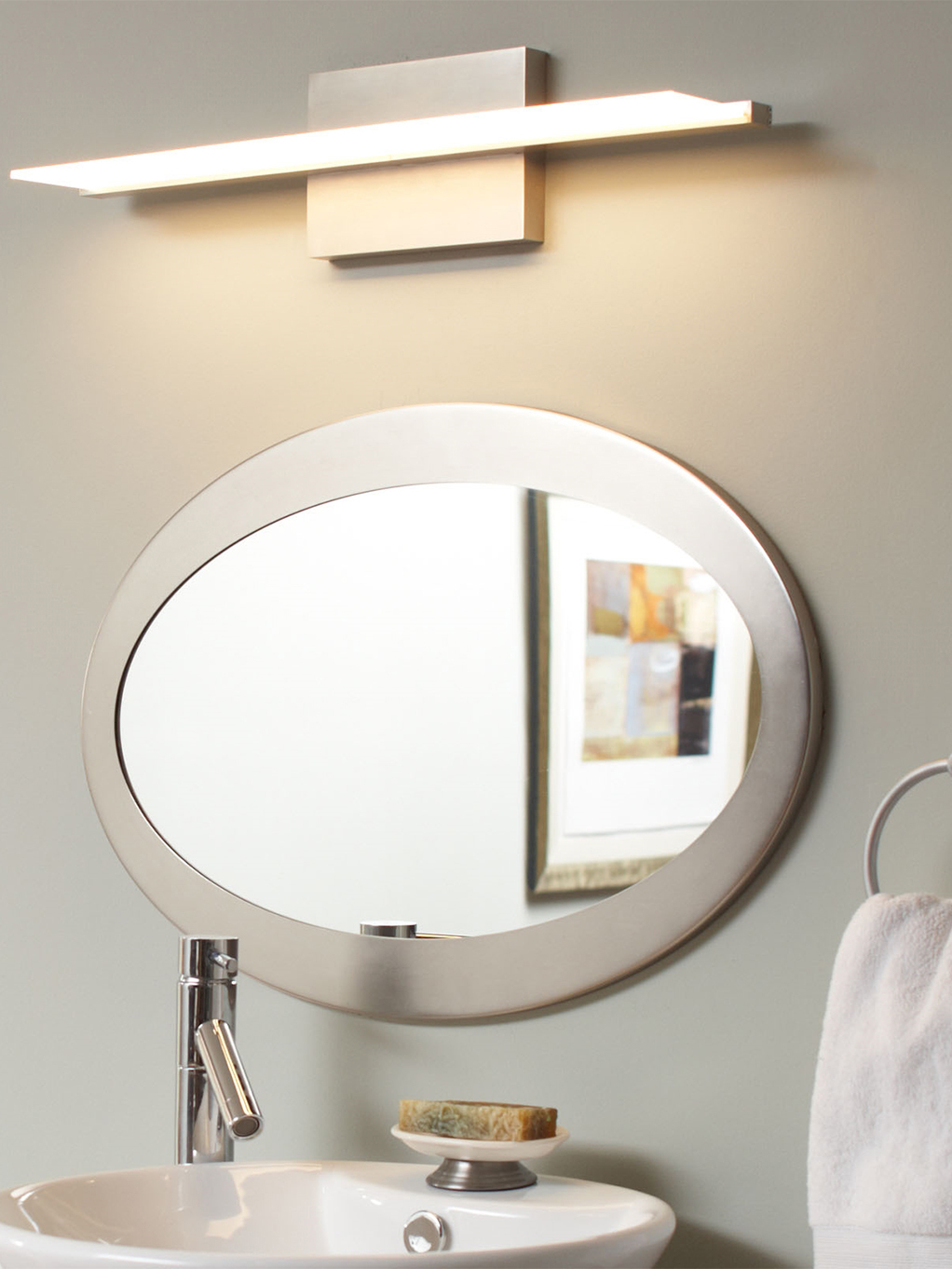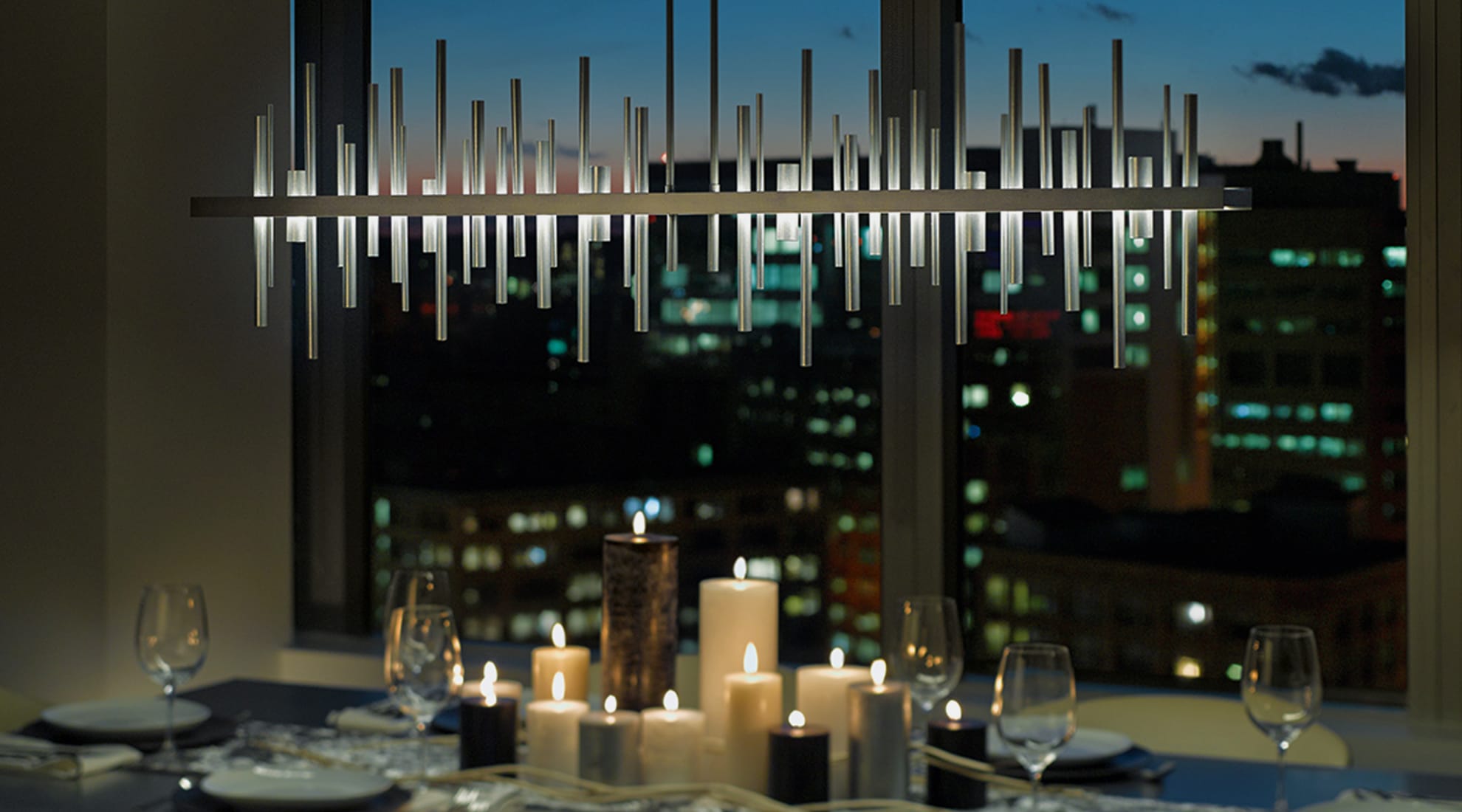LED Lighting Buyer's Guide
Bringing LED lighting into your home shouldn’t be complicated.
We tackle the most common questions to make it a simple switch.
Energy efficient, long lasting, and environmentally friendly, LED lighting is a thoughtful choice for the modern home. Today's LED lighting choices are especially diverse, which means LEDs can find a home in just about any room, whether as a striking chandelier, lighting under your kitchen cabinets or brightening up the exterior of your home. Here, you will find some of the most common questions for finding the right LED light fixtures for your home.
What are the advantages of LED?
The simplest answer is efficiency. An LED light fixture will use 90% less electricity than an incandescent version. Plus, LED light bulbs last significantly longer than traditional incandescent light bulbs, so you’ll spend less time replacing bulbs and less effort (think about those hard-to-reach recessed lamps in a vaulted ceiling) maintaining them.
Other advantages to LEDs include:
- Durability: LED lights are quite sturdy, and this durability minimizes the risk of your light breaking and requiring repair or replacement.
- Safety: LED lights are safe choices because they don't heat up like other light bulbs, which can reduce the risk of lighting-caused fires or burns.
What about the disadvantages of LED?
The biggest drawback to LED lighting is the initial cost, which is more than your standard incandescent light bulbs. But because LED lights are more durable and longer lasting than their traditional counterparts, you will incur fewer lighting expenses over time, bringing the overall cost of these LED lights down significantly.
How long do LEDs last?
A good-quality LED promises an average lifespan of at least 25,000 hours, all the way up to 50,000 hours. To compare, the average lifespan of an incandescent is about 1,000 hours, and CFLs about 9,000 hours. With regular daily use—8 hours each day, every day—an LED could last up to 17 years!
What are my options for going LED in my home?
You could swap out your current light bulbs for LED bulbs, or you can update your lighting fixture to one with integrated LEDs, or lamping that is built into the fixture's design.
While we used to see LEDs primarily in task lighting or outdoor spaces, the versatility of today's design means they can work in any room you choose, including:
- Decorative ceiling lights
- Recessed lighting
- Wall lights
- Bath & vanity lights
- Desk and task lamps
- Undercabinet lighting
- Outdoor and landscape lighting

LED bath and vanity lights take on new, super sleek shapes like Tech Lighting’s Span Bath Bar shown here.
My new LED bulb says it lasts 35,000 or 50,000 hours. Why is the warranty only 3 or 5 years?
The warranties on an LED bulb are similar to that of a car or appliance. A manufacturer doesn't know exactly how you'll use it, so the warranty period is a generic time-frame that should cover almost all uses of the product, however outside of the norm they may be. That way the warranty covers those who might have a light on 24 hours a day, 7 days a week, as well as someone using it for 4 hours a day just a few times a week.
Why is the pricing so different between similar LED bulbs?
Like any other commodity, the price of an LED bulb will fall over time as the technology gets better and better. The latest generation of bulbs might carry a lower price tag, whereas the price of a first-generation LED could be significantly more expensive. It also depends on the manufacturer, as each has their own process for manufacturing LED products—for example, an LED chip might be made in-house by a manufacturer or purchased from a third party. Those options each carry their own cost that will be reflected in the retail cost of a product.
| How bright is that LED? | ||||
|---|---|---|---|---|
| The brightness of LEDs in measured in Lumens, but you’re probably more familiar with wattage as an indicator of how bright a light will be. Simply put, more lumens equals more light, but here’s a handy conversion chart: | ||||
| Incandescent wattage | Lumens equivalent | LED wattage |
||
| 100 W | 1600 | up to 22 W | ||
| 75 W | 1100 | up to 20 W | ||
| 60 W | 800 | up to 12 W | ||
| 40 W | 450 | up to 9 W | ||
| MORE ABOUT LUMENS | ||||
Do LED lights work with a dimmer?
The short answer is yes, you can dim an LED light—but you’ll want to read the full details on the bulb or fixture to know for sure. For light fixtures that use integrated LEDs, it depends on the manufacturer’s suggestion. Many recommend you use an ELV dimmer, but some fixtures are functional with a regular incandescent dimmer. But it’s important to note that LED lighting doesn’t dim in the same way an incandescent was. Rather than having the light turn down and warm, an LED will dim by lowering the lumen output, thus decreasing brightness of the light.
How do I choose the LED that’s right for me?
Most lighting manufacturers have made the move to LED. So if you have a non-LED light fixture from a brand you like and trust, that’s a good place to start.
Otherwise, you can shop for an LED light the same way you would an incandescent—by ensuring it provides the light you need in a style or design you like. To determine the amount of light you need, you can refer back to the wattage of the incandescent lighting you’re used to and translate it to lumens (see the Lumens Chart above).
When you're shopping at Lumens, you can use the navigation in any group of products to refine by light source if you’re looking only for an LED light.




